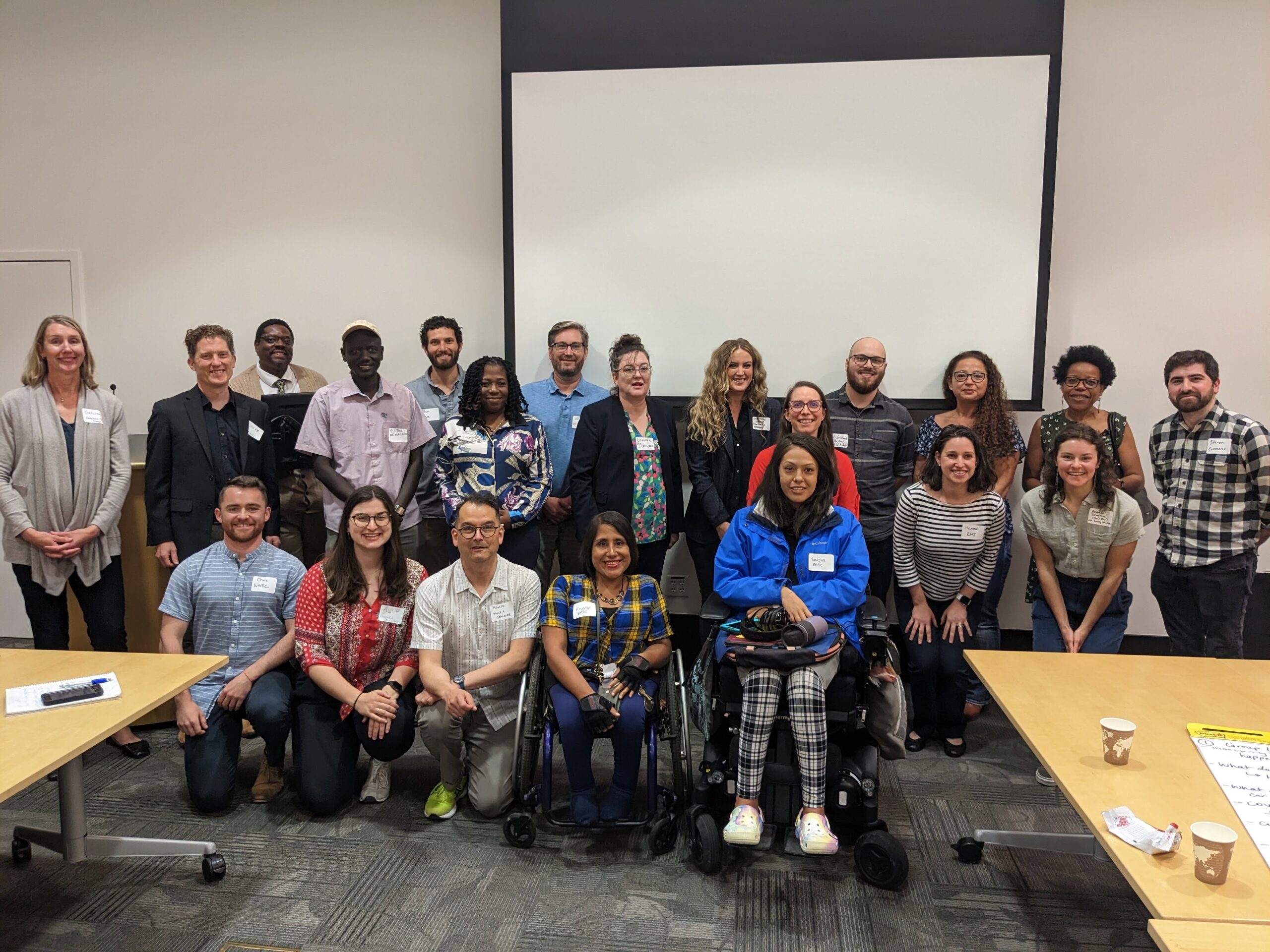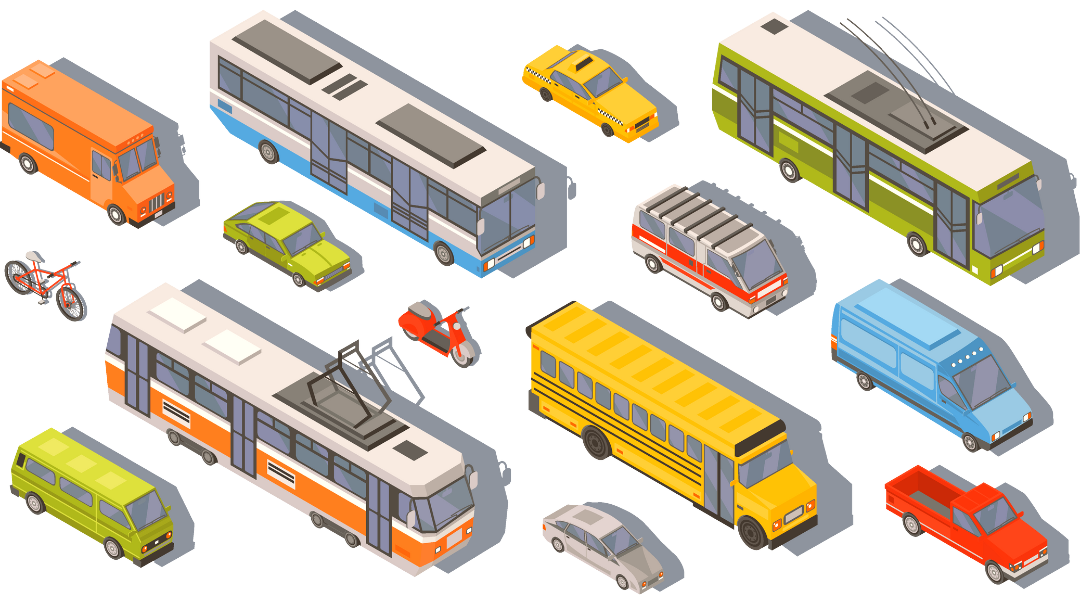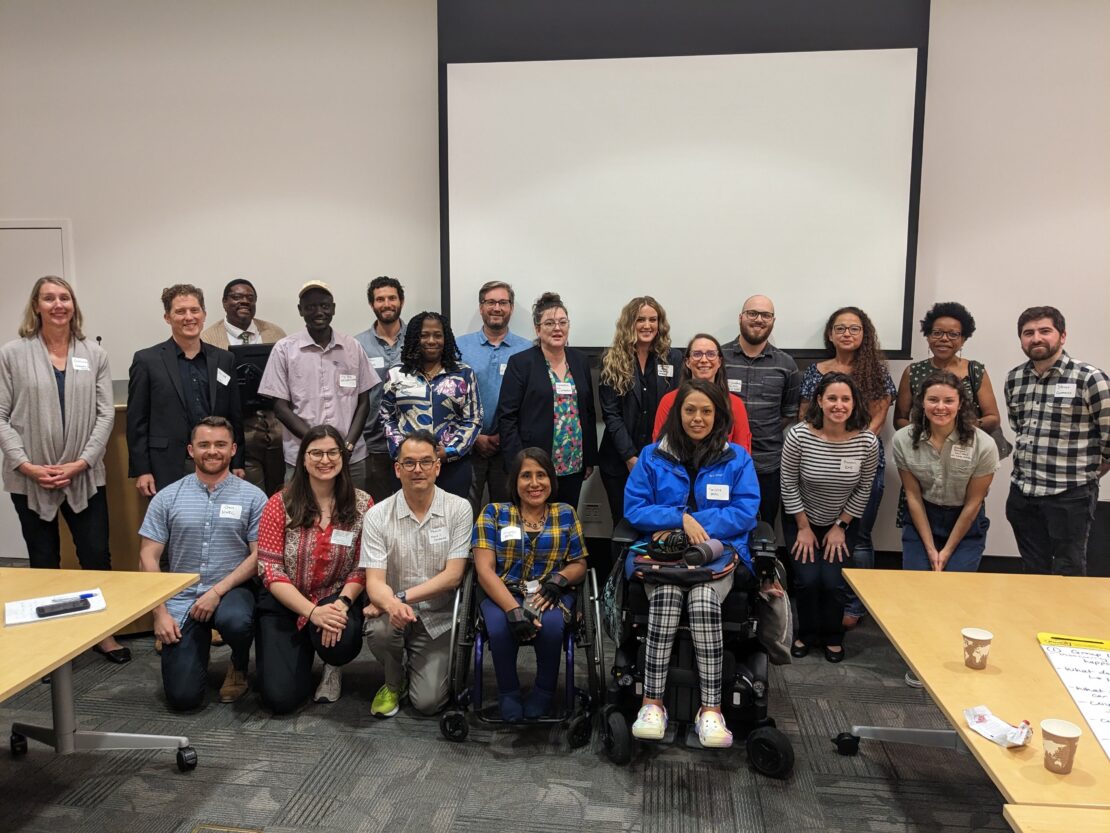
By Aaron Fishbone and Sierra Suafoa-McClain
When the clock strikes 12:01 AM on January 1, 2035, no new, polluting, fossil fuel burning combustion engine cars will be sold, rented or leased in the Evergreen State. Washington is committed to reduce emissions significantly by 2035 and near zero by 2050. This transition could be the largest change in the transportation energy system in our lifetimes, but how we get there will determine who gets to feel the benefits of that change.
In January 2024 the Interagency Electric Vehicle Coordinating Council (EVCC) published the Washington State Transportation Electrification Strategy (WATES). The TES is a comprehensive approach to electrifying the State’s transportation sector and phasing out the sale, rental and leasing of new combustion engine vehicles by 2035.
Front and Centered staff and members of the coalition engaged with the EVCC over the last year. From the outset, we knew that electrification could not be the sole solution to reducing our state’s transportation greenhouse gas emissions, and that any effective solutions must be equitable. This is a summary of our work to center equity and a Just Transition in state electrification policy.
Transportation Electrification in Support of a Just Transition
Our coalition seeks to transition away from an extractive economy to one centered on ecological restoration, community resilience, and social equity, fueled by regenerative resources and cooperative work, governed by deep democracy, and a culture of caring and sacredness. One of the pillars of this Just Transition requires us to center those disproportionately impacted in governance and societal structures.
To achieve a Just Transition off fossil fuels in transportation, electrification must be part of a broader strategy that reduces the number of vehicles on the road and vehicle miles traveled. We know that this is the path to greater equity and to healthier communities.
Electrifying transportation would drastically reduce the amount of oil and gas we use to power our vehicles. This would have significant environmental and health benefits in the communities and environments from where oil is drilled and extracted. It would also have a huge impact on our communities in Washington, where transportation emissions account for 39% of statewide carbon emissions and significant air pollution. It is frontline communities, often low-income and/or Black, Indigenous, and people of color (BIPOC), that suffer the most from fossil fuel-powered transportation, where oil is refined, transported, and emitted.
But, for many reasons, switching to an electric vehicle (EV) is not immediately feasible for front line communities. Some prominent reasons for hesitation are:
- Examining Disparities in Affordability — The cost of EVs is still too expensive for many families, and charging vehicles will also have a cost (even if it will be less expensive than gasoline). For the private and public sector, the costs associated with strengthening the electric grid and installing and maintaining chargers will require further investments. But these costs could exacerbate income and wealth disparities among families without intentional strategies to ensure equity. For example, Front and Centered and the Northwest Energy Coalition conducted an informal analysis of public and private charging rates in Washington and found that, in general, an EV owner with an equipped house will spend three to four times less to charge their vehicles than EV owners who will need to use publicly available charging stations to charge their cars.
“Washington’s Transportation Electrification Strategy needs to be able to address policy that ensures cost of living will not be impacted by any changes to building infrastructure, public infrastructure, modes of transportation, and utility rates. Public transit users are often unwilling to support or acknowledge public transportation electrification because of beliefs that the cost of riding will increase, and routes/services will lessen in their neighborhoods, meaning it will take more time and money to travel.” — Chiyo Crawford, Executive Director, ECOSS
- Continuing to Make Public Transportation a Priority — Through a series of meetings on transportation justice with residents around the state, we found that increasing the quantity and quality of public transit is often a higher priority than vehicle fuel source. This includes expansion of public transit and mobility infrastructure such as better sidewalks, crosswalks, and bus stops.
- Ensuring Equitable Access and Information — Language and information access about EV purchasing, charging, and maintenance is not widely available to frontline community members who drive. As such, these drivers may be resistant to making the transition because they do not have access to information they need to make an informed decision.
- Addressing Fears over Gentrification and Displacement — For some communities, the installation of EV chargers can signify gentrification or the beginnings of being pushed out of their neighborhoods. A strategy that could address these fears is necessary to ensure that frontline communities could be centered in the transition rather than be left on the fringe.
- Intersecting Challenges — Switching from a car-culture dominated by internal combustion engines (ICE) to one with electric drivetrains without creating a new community-centered transportation culture would leave unaddressed many root problems in our transportation system (such as inequitable land-use and housing issues) while exacerbating other issues (like energy insecurity and non-driver safety).
For every Washingtonian to feel the benefit of electrification, our state must make real investments that solve the compounding problems frontline communities face, rectify the effects of historical redlining, close the gaps in our transit service and build safe sidewalks, and shift the state transportation budget so that it eliminates polluting transportation sources while supporting climate and mobility justice for all.

Strategy Recommendations
With those facets, we developed several overarching principles to achieve a just and equitable transportation electrification:
- Center Equity as a Guiding Principle Early in the Process — The legislation authorizing and funding the WATES included language requiring the WATES to ensure benefits for frontline communities. That language shaped the contours of the WATES from the outset and allowed for discussions that expanded the scope of the process beyond electric vehicle adoption alone. It also encouraged important conversations about how electric vehicles could be made more affordable—by creating a used EV market, by creating social leasing programs so that households can use EVs without needing to own one, and by significantly targeting subsidies to enable purchase. This strategy was proven effective and should be replicated in further legislation and rulemaking.
- Invest in Community Capacity — The WATES team conducted polling, surveys, and focus groups for community engagement. While these are helpful methodologies, more often than not these tools provide venues for advocates and industry representatives to restate their policy priorities, interpret public feedback, and to capture snapshots of public opinion.
Realizing that these methods were not sufficient to fully capture the perspectives of all stakeholders, the WATES team gathered community-based organizations and leaders with varying levels of expertise in transportation electrification but with deep experience in their communities. This group met several times throughout the WATES process, learning from policy experts and each other. This ultimately enabled them to imagine, assess, and consider policy proposals and their impact on frontline communities more deeply. This level of in-depth collaboration should be pursued in further planning and implementation of the WATES. - Conduct Multi-sector Engagement to Identify Unintended Consequences — On several occasions, key stakeholder perspectives would have been missed had there not been an emphasis on critical constituencies. For example, advocates in the disability rights movement flagged that charging cords over sidewalks pose a danger for persons with mobility devices. Similarly, affordable housing developers and advocates voiced concerns that parking and charging requirements often increased construction costs on projects with minimal margins and also pit electrical vehicle adoption goals against transit-oriented development.
- Develop Metrics That Center Equity — Metrics assist implementers in making real-time adjustments leading to more efficient and cost-effective work. The WATES ultimately recommended an equity-focused iterative strategy rooted in real data measuring equity impacts (pg. 46 of the full report). This could serve as a basis for mid-course adjustments to ensure that frontline communities are not left behind.
- Examine the Intersections — Limiting the scope and focus of transportation electrification strategies to specific outcomes, like increased EV ownership, can be a barrier to understanding the implications of electrification. It bears repeating that a one-to-one replacement of EVs for internal combustion vehicles is not the solution. Rather, transportation electrification is one tool among many in shaping a more environmentally sustainable and accessible transportation system, including investments in public transportation and other strategies to reduce vehicle miles traveled and vehicle emissions.
We also found that communities were interested in understanding whether electrification aligned with environmental justice and a Just Transition in other ways. For example, participants wanted to know how Washington State could ensure that EV batteries do not create new pollution through destructive and exploitative mining practices, and they wanted to know that EV batteries and vehicles would be re-used and recycled. They also wanted to know how the state could demand more from utilities, including holding them accountable for transparency in charging, reducing disparate energy burdens on BIPOC communities, ensuring adequate services for marginalized communities, and ending electricity cut-offs because of their impact on households and the ability of families to use their electric vehicles to meet basic needs.
Policy Recommendations
We strongly support elements of the WATES that focus on reducing vehicle miles traveled; investing in electrified public transport; investing in school buses and replacing vehicles contributing disproportionately to pollution in frontline communities; and supporting more walkable communities and safe, active mobility. The state can make progress by moving forward strategies which are cumulative and community centered and will have immediate, short term effects, so that the WATES objectives are felt across the entire state.
The following recommendations were included in a public comment our coalition submitted in October 2023. They represent some but not all of the WATES recommendations that have our support:
- Establish a State-backed, Publicly-owned Electric Vehicle Leasing Program — A state-supported, low-cost leasing program (pg. 8) in which EV leases are targeted to vulnerable populations at a low cost can have an outsized ability to enable our communities to access EVs without locking in long-term debt, being preyed upon by lenders, or unnecessarily putting more vehicles on the road.
- EV Incentives/Rebates Must be Targeted Toward Lower-income Consumers in High-impact Sectors — Universal incentives reinforce auto dependency, risk trapping consumers in high-cost financing on depreciating assets, and the available incentive funds would likely be quickly exhausted without achieving equity outcomes. Therefore, EV incentives should support EV adoption by vulnerable populations in overburdened communities in specific high-use, high-impact sectors. To that end, we support the recommendation that the state’s EV rebate program be targeted (pg. 86).
- Protect Consumers and Regulate the Price of Public Charging — Charging consumer protections and price transparency (pg. 82) and renter protections regarding EV charging (pg. 82) are important. These provide a starting point for a consumer protection regime for public EV charging. People without access to home charging should not be forced to pay so much more than those with access and ease of charging at their residence. Public and residential rates need to be reasonable, if not equivalent, and there must be a robust system of consumer protections to shield those with the least economic or political power from being exploited by an unregulated market.
Electricity is a public good that is generated, transmitted, distributed along regulated lines. However, now, when being used as a source of power for transportation, it is unregulated. This means that electric vehicle service providers are able to charge whatever prices they want, which is exactly why public charging costs more than residential. It also leaves people who rely on public charging with no recourse. Regulations and oversight are needed to ensure the fairness and reasonable rates, especially for those who rely solely on public charging. This could go as far as the creation of a fully public utility for EV charging if the private market chooses not to play its role in a ‘mutually beneficial’ way.
- Establish Governance and Oversight for Equitable Outcomes — The policy recommendations of the WATES span actions and authorities across a large number of state agencies. The agencies comprising the EVCC work together but do not have authority over each other or elements of transport electrification out of their jurisdiction. Experience has shown us that fragmented and siloed approaches to governance will lead to uneven oversight, inadequate attention to equity, and inconsistent application of civil rights laws. Thus, there is a vital need for centralized and coordinated governance and oversight of the transition, via, for example, the creation of a cabinet or subcabinet agency with a clear mandate to ensure equity outcomes, protect consumers, and ensure that the transition is a success for all Washingtonians, especially those most overburdened and impacted by today’s transport inequities.
On this point, the report falls short. Our concerns are heightened given the magnitude and wide ranging nature of the electrification transition, touching energy, transportation, and more. Governing to equity will also require clarifying how the state will course correct if equity measures tracked (pg. 78) by the state fall short; establishing new authority in the state government to manage transportation electrification, as described above; and enabling the state to intervene where the market fails to invest.
To Conclude
Our Transportation Justice agenda calls for actions that will improve the health and dignity of all Washingtonians, particularly BIPOC communities that have faced the greatest barriers to mobility and worst health outcomes from our transportation system. The pursuit of electrification is one method to meet the 2050 goals, and its implementation must be equitable to all Washingtonians. Even with electrification, and indeed to achieve it, we must reduce the number of vehicle miles traveled and number of vehicles on the road. Doing so will require better investments into mobility and public transportation across the state. Front and Centered will continue to advocate for these critical shifts through our coalition’s grassroot leadership and statewide policy advocacy.
Many thanks to the coalition members and frontline partners who contributed to our strategies for transportation electrification!
African Housing and Development Consortium
Asian Pacific Islander Coalition of Yakima
Asians for Collective Liberation Spokane
Drivers Union
ECOSS (formerly Environmental Coalition of South Seattle)
Empowered Movement Washington (EMWA)
Equity in Education Coalition
Gather Together Grow Together
Homesight Housing Development Consortium
People’s Economy Lab
Port of Seattle
Puget Sound Sage
Urban League of Metropolitan Seattle
Washington State Coalition of African Community Leaders
Additional thanks to WATES collaborators, the EV Council Advisory Committee, EV Council agencies, and the consulting team, including the Rocky Mountain Institute, Northwest Energy Coalition, and Cascadia Consulting Group.



